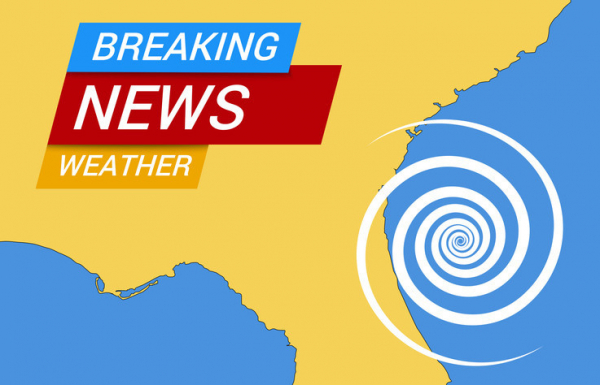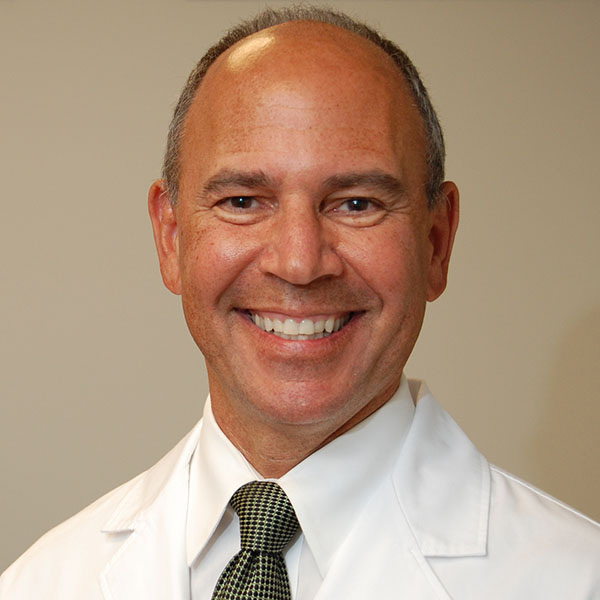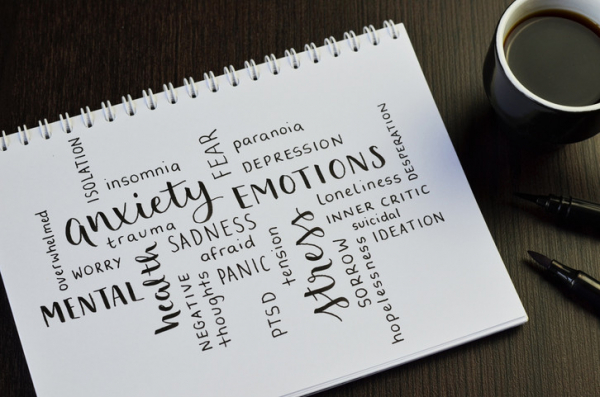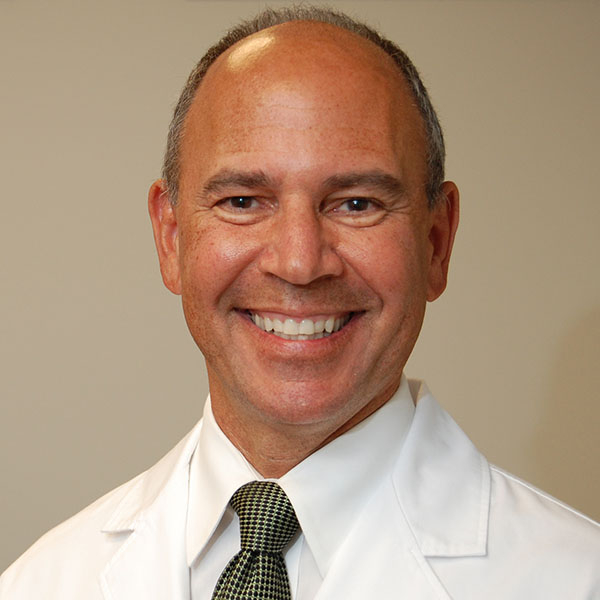
Packing your hurricane go bag? Make provisions for your health

When you live in a coastal area, preparing early for potential hurricanes is a must. Storms can develop quickly, leaving little time to figure out where you’ll be safe or which items to pack if you have to evacuate. And health care necessities, such as medications or medical equipment, are often overlooked in the scramble.
“People might bring their diabetes medication but forget their blood sugar monitor, or bring their hearing aids but forget extra batteries for them,” says Dr. Scott Goldberg, medical director of emergency preparedness at Brigham and Women’s Hospital and a longtime member of a FEMA task force that responds to hurricane-damaged areas.
Here’s some insight on what to expect this hurricane season, and how to prioritize health care in your hurricane kit.
What will the 2024 hurricane season look like?
This year’s hurricane predictions underscore the urgency to start preparations now.
Forecasters with the National Oceanic and Atmospheric Administration's National Weather Service expect above-normal activity for the 2024 hurricane season (which lasts until November 30).
Meteorologists anticipate 17 to 25 storms with winds of 39 mph or higher, including eight to 13 hurricanes — four to seven of which could be major hurricanes with 111 mph winds or higher.
What kinds of plans should you make?
Preparing for the possibility of big storms is a major undertaking. Long before ferocious winds and torrential rains arrive, you must gather hurricane supplies, figure out how to secure your home, and determine where to go if you need to evacuate (especially if you live in a flood zone). Contact the emergency management department at your city or county for shelter information.
If you’ll need help evacuating due to a medical condition, or if you’ll need medical assistance at a shelter, find out if your county or city has a special needs registry like this one in Florida. Signing up will enable first responders to notify you about storms and transport you to a special shelter that has medical staff, hospital cots, and possibly oxygen tanks.
What should you pack?
While a shelter provides a safe place to ride out a storm, including bathrooms, water, and basic meals, it’s up to you to bring everything else. It’s essential to pack medical equipment and sufficient medications and health supplies.
“It’s natural to just grab the prescription medications in your medicine cabinet, but what if it’s only a two-day supply? It might be a while before you can get a refill. We recommend at least a 14-day or 30-day supply of every prescription,” Dr. Goldberg says. “Talk to your doctor about the possibility of getting an extra refill to keep on standby for your go bag.”
Other health-related items you’ll want to pack include:
- medical supplies you use regularly, such as a blood pressure monitor, heart monitor, CPAP machine, wheelchair, or walker
- over-the-counter medicines you use regularly, such as heartburn medicine or pain relievers
- foods for specific dietary needs, such as gluten-free food if you have celiac disease (if you have infants or children, you’ll need to bring foods they can eat)
- healthy, nonperishable snacks such as nuts, nut butters, trail mix, dried fruit, granola bars, protein bars, and whole-grain bread, crackers, or cereals
- hygiene products such as soap, hand sanitizer, toothbrushes and toothpaste, shampoo, deodorant, infant or adult diapers, lip balm, moist towelettes, and toilet paper — because shelters often run out of it.
Remember the basics
In some ways, you can think of shelter living like camping. You’ll need lots of basic supplies to get through it, including:
- a sleeping bag or blanket and pillow for each person in your family
- clean towels and washcloths
- a few extra changes of clothes per person
- a first-aid kit
- flashlights and extra batteries
- chargers for your electronic gadgets
- rechargeable battery packs.
Bring important paperwork
In addition to supplies, bring important documents such as:
- a list of your medications, vitamins, and supplements (include the name, dose, and frequency of each one)
- a list of the names, addresses, and phone numbers of your primary care provider and any specialists who treat you
- a list of your emergency contacts and their phone numbers
- your pharmacy’s phone number and address
- copies of your birth certificate and driver’s license
- copies of home, car, or life insurance policies
- copies of your health insurance cards
- a copy of your advance directive — which includes your living will and health care proxy form.
“Store these documents on a flash drive. Also make photocopies of them, which are easiest for doctors to consult in an emergency setting. Place them in a plastic zip-top bag to keep them dry,” Dr. Goldberg advises.
Prepare right now
Start today. Gather as many go-bag supplies as you can, including the bags. A small suitcase, backpack, or duffel bag for each person in your family will work well.
And try not to put off these important preparations. “Hurricanes are major stressors. You might be worried, sleep deprived, fatigued, and emotional,” Dr. Goldberg says. “All of that will make it hard to think clearly. You’ll do yourself and your family a favor by having discussions now and getting started on your hurricane plan.”
About the Author

Heidi Godman, Executive Editor, Harvard Health Letter
Heidi Godman is the executive editor of the Harvard Health Letter. Before coming to the Health Letter, she was an award-winning television news anchor and medical reporter for 25 years. Heidi was named a journalism fellow … See Full Bio View all posts by Heidi Godman
About the Reviewer

Howard E. LeWine, MD, Chief Medical Editor, Harvard Health Publishing; Editorial Advisory Board Member, Harvard Health Publishing
Dr. Howard LeWine is a practicing internist at Brigham and Women’s Hospital in Boston, Chief Medical Editor at Harvard Health Publishing, and editor in chief of Harvard Men’s Health Watch. See Full Bio View all posts by Howard E. LeWine, MD

PTSD: How is treatment changing?

Over the course of a lifetime, as many as seven in 10 adults in the United States will directly experience or witness harrowing events. These include gun violence, car accidents, and other personal trauma; natural or human-made disasters, such as Hurricane Katrina and the 9/11 terrorist attacks; and military combat. And some — though not all — will experience post-traumatic stress disorder, or PTSD.
New guidelines released in 2024 can help guide effective treatment.
What is PTSD?
PTSD is a potentially debilitating mental health condition. It’s marked by recurrent, frightening episodes during which a person relives a traumatic event.
After a disturbing event, it’s normal to have upsetting memories, feel on edge, and have trouble sleeping. For most people, these symptoms fade over time. But when certain symptoms persist for more than a month, a person may be experiencing PTSD.
These symptoms include
- recurring nightmares or intrusive thoughts about the event
- feeling emotionally numb and disconnected
- withdrawing from people and certain situations
- being jumpy and on guard.
The National Center for PTSD offers a brief self-screening test online, which can help you decide whether to seek more information and help.
Who is more likely to experience PTSD?
Not everyone who experiences violence, disasters, and other upsetting events goes on to develop PTSD. However, military personnel exposed to combat in a war zone are especially vulnerable. About 11% to 20% of veterans who served in Iraq or Afghanistan have PTSD, according to the National Center for PTSD.
What about people who were not in the military? Within the general population, estimates suggest PTSD occurs in 4% of men and 8% of women — a difference at least partly related to the fact that women are more likely to experience sexual assault.
What are the new guidelines for PTSD treatment?
Experts from the U.S. Department of Veterans Affairs and Department of Defense collaborated on new guidelines for treating PTSD. They detailed the evidence both for and against specific therapies for PTSD.
Their findings apply to civilian and military personnel alike, says Dr. Sofia Matta, a psychiatrist at Harvard-affiliated Massachusetts General Hospital and senior director of medical services at Home Base, a nonprofit organization that provides care for veterans, service members, and their families.
The circle of care is widely drawn for good reason. “It’s important to recognize that PTSD doesn’t just affect the person who is suffering but also their families and sometimes, their entire community,” Dr. Matta says. The rise in mass shootings in public places and the aftermath of these events are a grim reminder of this reality, she adds.
Which treatment approaches are most effective for PTSD?
The new guidelines looked at psychotherapy, medications, nondrug therapies. Psychotherapy, sometimes paired with certain medicines, emerged as the most effective approach.
The experts also recommended not taking certain drugs due to lack of evidence or possible harm.
Which psychotherapies are recommended for PTSD?
The recommended treatment for PTSD, psychotherapy, is more effective than medication. It also has fewer adverse side effects and people prefer it, according to the guidelines.
Which type of psychotherapy can help? Importantly, the most effective therapies for people with PTSD differ from those for people with other mental health issues, says Dr. Matta.
Both cognitive processing therapy and prolonged exposure therapy were effective. These two therapies teach people how to evaluate and reframe the upsetting thoughts stemming from the traumatic experience. The guidelines also recommend mindfulness-based stress reduction, an eight-week program that includes meditation, body scanning, and simple yoga stretches.
Which medications are recommended for PTSD?
Some people with severe symptoms need medication to feel well enough to participate in therapy. “People with PTSD often don’t sleep well due to insomnia and nightmares, and the resulting fatigue makes it hard to pay attention and concentrate,” says Dr. Matta.
Three medicines commonly prescribed for depression and anxiety — paroxetine (Paxil), sertraline (Zoloft), and venlafaxine (Effexor) — are recommended. Prazosin (Minipress) may help people with nightmares, but the evidence is weak.
Which medications are not recommended for PTSD?
The guidelines strongly recommended not taking benzodiazepines (anti-anxiety drugs often taken for sleep). Benzodiazepines such as alprazolam (Xanax) and clonazepam (Klonopin) offer no proven benefits for people with PTSD. They have several potential harms, including negative cognitive changes and decreased effectiveness of PTSD psychotherapies.
What about cannabis, psychedelics, and brain stimulation therapies?
Right now, evidence doesn’t support the idea that cannabis helps ease PTSD symptoms. And there are possible serious side effects from the drug, such as cannabis hyperemesis syndrome (severe vomiting related to long-term cannabis use).
There isn’t enough evidence to recommend for or against psychedelic-assisted therapies such as psilocybin (magic mushrooms) and MDMA (ecstasy). “Because these potential therapies are illegal under federal law, the barriers for conducting research on them are very high,” says Dr. Matta. However, recent legislative reforms may make such studies more feasible.
Likewise, the evidence is mixed for a wide range of other nondrug therapies, such as brain stimulation therapies like repetitive transcranial magnetic stimulation or transcranial direct current stimulation.
About the Author

Julie Corliss, Executive Editor, Harvard Heart Letter
Julie Corliss is the executive editor of the Harvard Heart Letter. Before working at Harvard, she was a medical writer and editor at HealthNews, a consumer newsletter affiliated with The New England Journal of Medicine. She … See Full Bio View all posts by Julie Corliss
About the Reviewer

Howard E. LeWine, MD, Chief Medical Editor, Harvard Health Publishing; Editorial Advisory Board Member, Harvard Health Publishing
Dr. Howard LeWine is a practicing internist at Brigham and Women’s Hospital in Boston, Chief Medical Editor at Harvard Health Publishing, and editor in chief of Harvard Men’s Health Watch. See Full Bio View all posts by Howard E. LeWine, MD